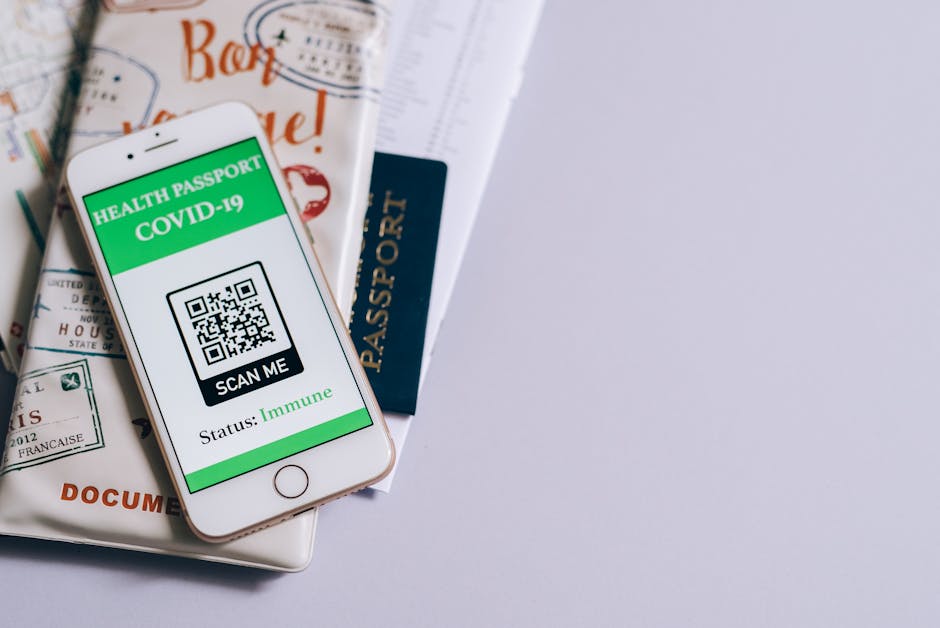So, we’re in 2025 now, and you know, making a mobile app isn’t just a “one and done” kind of thing. It never was, really. If you’ve got an app out there, or you’re thinking about one, you’re going to face this constant business of updating it. Every new version needs a bit of thought, a lot of work, and some specific things you just gotta get right. It’s not always simple what you need to do.
It’s often a messy process, if we’re being honest, with lots of moving parts and people involved. Deciding on what’s needed for the next app update, you know, it feels like figuring out a puzzle sometimes. There are user expectations to keep happy, new phone operating systems always popping up, and then all the stuff the competition is doing.
This means that you really need to sit down and figure out what exactly are mobile app version development requirements. It’s not just a technical list, though those are pretty important too, it’s about everything surrounding it. From the first idea right up to when people start downloading the fresh version, there’s a good deal to keep in mind.
Getting Ready for a New App Update: What You’ll Need to Think About
Before anyone even touches code, a lot of thinking has to happen, you know. It’s really about figuring out what the point of this new version even is. Are you fixing bugs that have been bugging everyone, or maybe adding some totally new things people have been asking for? Both are usually good.
You really should talk to your users, well, if you can get to them easily. See what they like, what they don’t like so much. Sometimes it’s a small change that makes a big difference for them. Other times, it’s that one big thing that they are hoping for, you know, a feature.
Then there’s the market. What are other apps like yours doing? Are there new trends everyone is suddenly into? Keeping an eye on that can definitely guide your plans. It’s not about copying them entirely, but just understanding the space your app lives in, basically.
And also, let’s not forget about the operating systems themselves. iOS, Android, they both get these big updates every year, normally. Your app has to play nice with those changes, otherwise, it could cause some real headaches for people trying to use it. It’s a fundamental part of the whole plan.
The Technical Stuff: Making Sure the Code and Systems are Up to Snuff
When it actually comes to the doing part, a bunch of technical things certainly do need looking at. The code itself, it should be clean and well-organized so that adding new stuff or fixing old stuff doesn’t turn into a nightmare. That’s just generally good practice for anyone, actually.
APIs, these are like the connectors apps use to talk to other services, those often get updated too. Your app’s connections might need tweaking to work with the latest versions. If you don’t do this, some parts of your app might just stop working correctly. It is considered to be pretty standard practice.
Performance is another big one. People don’t like slow apps, never have, never will. So, any new version needs to be as speedy or even speedier than before. Making things quicker, or using less battery power, those are always good goals for any app update. People really expect that from things they use everyday.
Security, oh boy, that’s a constant battle, isn’t it? New threats always pop up, so your app needs to stay patched up and secure. Protecting user data, making sure nobody can get into places they shouldn’t, that’s incredibly important. It’s something you just don’t want to mess up.
Also, for those who might be considering making a brand new app or perhaps giving an old one a bit of a facelift, getting some external people involved can be super helpful. For folks around Houston, for instance, there are places like Mobile app development Houston that can provide assistance with these kinds of technical challenges. They can often really sort out the nitty-gritty details.
User Experience and Design Tweaks: How Things Look and Feel
What an app looks like, and how it feels to use, is a massive deal, we all know this. A new version might need some changes to the visual parts, the design, to match new operating system guidelines. Or perhaps to just make it look more fresh and modern for your users.
Making things easy to use is super important. Sometimes, adding a new feature means rearranging other things a little bit. You don’t want to make the app harder to navigate, because then people will just get frustrated and stop using it. Simplicity is quite often the way to go.
Accessibility is something that also deserves a lot of thought. Are people with different needs able to use your app without trouble? Things like larger text options or screen reader compatibility, those make a big difference for many people. It means more people can use your app, which is good.
It’s a balance, keeping the app familiar but also making it better. You want users to open the new version and feel like it’s still their app, but a nicer, more capable version of it. It’s a tricky tightrope walk sometimes, for sure. Getting this right is a big deal to many.
Testing and Rollout: Before Everyone Gets the New Version
Before you push that shiny new version out to the world, you just have to test it, and test it a lot. Bugs, those little annoying errors, they can crop up anywhere. Finding them early on saves a whole lot of trouble later for everyone involved. Nobody wants a broken app.
Sometimes it’s good to let a smaller group of people try the app first, what they call beta testing. These are usually regular users who are willing to give you feedback on what’s working and what’s not. Their thoughts can be really useful before the big release. They often find things others don’t.
Then there’s the actual process of getting the app onto people’s devices. This isn’t just a simple button press. You need a plan for how you’re going to release it. Sometimes it’s a gradual rollout, where only a small percentage of users get it first, just to catch any last-minute issues.
And after it’s out there, you should really keep an eye on things. Are people reporting problems? Is the app crashing for some? Monitoring the app’s performance in the wild is very important for a while after an update. It’s never truly “done” when it gets released.
Keeping It Going After Launch: The Ongoing Work
Launching a new version isn’t the end of the story, not by a long shot. It’s actually more like the start of the next chapter, if you think about it. You gotta keep watching how people are using it, basically. This helps you figure out what to do next.
Looking at analytics, which is data about how people interact with your app, can tell you so much. What features are popular? Where do people get stuck? This sort of information helps shape future updates in a really useful way, making them better for everyone involved, generally speaking.
And those users who gave you feedback during beta testing, or even just people complaining on social media, you really do have to pay attention to them. Their comments are gold, honestly. Responding to problems quickly, showing you’re listening, that makes users happy, which is always good.
Ultimately, every new version you release is just one step on a longer journey. It’s all about making the app better bit by bit, keeping it relevant and useful for people. And then, you know, the whole process of figuring out what comes next starts all over again. It’s a continuous cycle, really.
FAQs About Mobile App Version Development Requirements1. What’s the biggest thing to think about when planning a new app version?
The biggest thing, generally speaking, is understanding why you’re even doing an update. Is it for fixing annoying bugs, or bringing out new stuff people want, or just making sure it works with the newest phone software? You should have a clear goal for it.
2. How often should an app get updated with a new version?
It varies quite a bit, but normally you’d want to update at least a few times a year. This keeps your app fresh, helps with new phone OS compatibility, and lets you fix any problems that crop up. It keeps users engaged too, which is nice.
3. Is it really necessary to test a new app version a lot before putting it out there?
Oh, absolutely, it’s super necessary. Skipping testing can lead to a whole bunch of bugs and crashes, and that makes users really unhappy. A good testing process means fewer headaches for everyone down the line. It’s a fundamental step.
4. What about making sure the app’s design still looks good after an update?
Yep, keeping the design looking current and feeling user-friendly is very important. New phone operating systems often have their own style, so you might need to adjust things to fit. It’s about making it look fresh but still familiar to people.
5. How do security needs fit into updating an app version?
Security is always a huge part of it, for every update. New vulnerabilities get found all the time, so your app needs regular security patches to protect user data and keep things safe. You just can’t skip out on those kinds of things.










